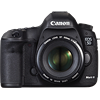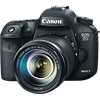Main
Model
Price
Advantages
launch
Announced
Body type
Camera subcategory
Sensor
Effective pixels
Max resolution
Sensor size
Sensor type
Processor
Image ratio w:h
Other resolutions
Sensor photo detectors
Image
ISO
Boosted ISO (minimum)
Boosted ISO (maximum)
White balance presets
Custom white balance
Image stabilization
Uncompressed format
JPEG quality levels
Photography features
Minimum shutter speed
Maximum shutter speed
Aperture priority
Shutter priority
Manual exposure mode
Subject / scene modes
Built-in flash
External flash
Continuous drive
Self-timer
Metering modes
Exposure compensation
AE Bracketing
WB Bracketing
Screen / viewfinder
Articulated LCD
Screen size
Screen dots
Touch screen
Screen type
Live view
Viewfinder type
Viewfinder coverage
Viewfinder magnification
Videography features
Resolutions
File Format
Videography notes
Microphone
Speaker
Optics & Focus
Autofocus
Digital zoom
Manual focus
Number of focus points
Lens mount
Focal length multiplier
Physical
Weight (inc. batteries)
Dimensions
Environmentally sealed
Battery
Battery details
Battery Life (CIPA)
Storage
Storage types
Storage included
Connectivity
USB
HDMI
Wireless
Wireless notes
Remote control
Microphone port
Headphone port
Other features
Orientation sensor
Timelapse recording
GPS
GPS notes
Samples
Videos
Summary
The Canon EOS 5D Mark III highest resolution of 5760 x 3840 pixels (22 megapixels) is better than the Canon EOS 7D Mark II highest resolution of 5472 x 3648 pixels (20 megapixels). The Canon EOS 5D Mark III has bigger sensor than the Canon EOS 7D Mark II: Full frame (36 x 24 mm) versus APS-C (22.4 x 15 mm). This is very important advantage of this camera as big sensor allows the camera owner to make pictures of the more professional quality. The Canon EOS 5D Mark III offers a wider ISO range of 100-25600 than 100-16000 ISO range of the Canon EOS 7D Mark II. Such ISO range allow you to make good quality pictures in low light situations. The Canon EOS 7D Mark II offers more focus points than the Canon EOS 5D Mark III: 65 vs 61. More number of focus points means less risk of losing focus lock while following a moving object.
The Canon EOS 5D Mark III has tilting display that will allow the camera owner to take photos from any interesting perspective.
The Canon EOS 7D Mark II is equipped with built-in flash. The Canon EOS 5D Mark III battery life is better in compare to the Canon EOS 7D Mark II battery life. According to CIPA standards the camera owner will be able to take 950 shots with the EOS 5D Mark III and only 670 with the EOS 7D Mark II. The Canon EOS 7D Mark II weighs 910g that is 40g less than the weight of the Canon EOS 5D Mark III. This feature can be convenient if the camera owner is a traveller, to be able to check the photo metadata and find out exactly where an image was produced.
Taking into account the above differences the EOS 5D Mark III will be the best choice. Get the lowest price on Amazon.


